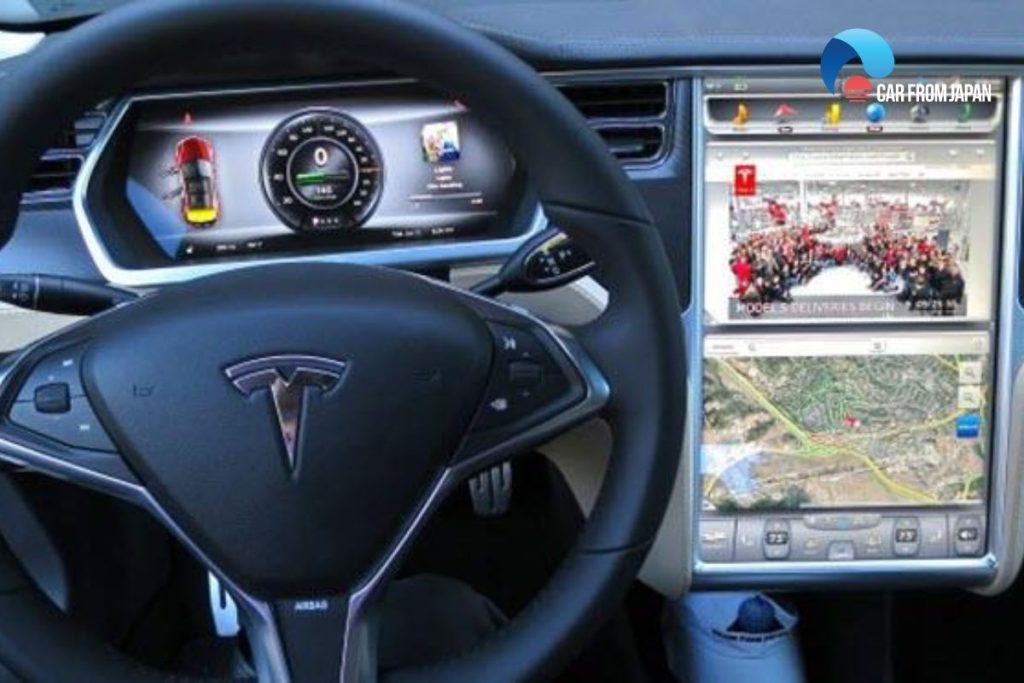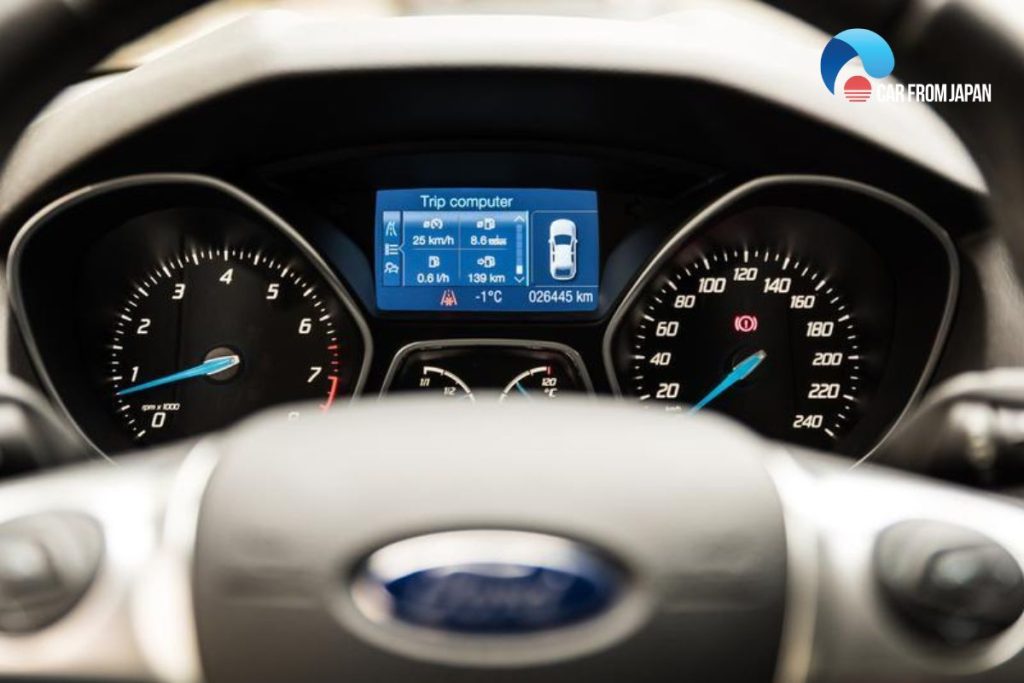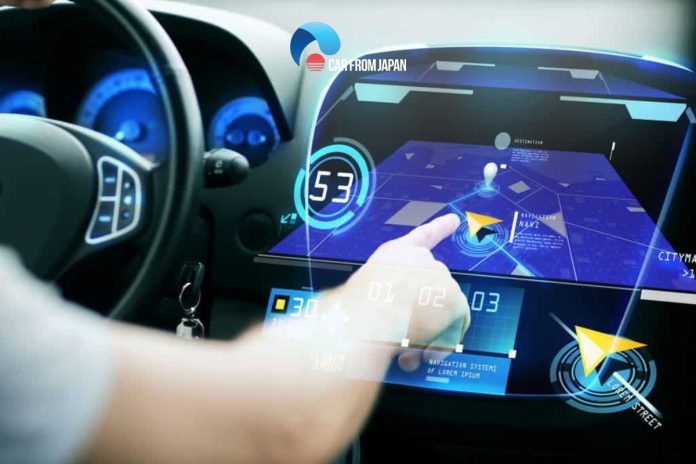The car computer, also known as ECU (Electronic Control Unit) aims at learning about the engine system of your vehicle. It keeps track of the tolerance changes in the engine actuators and sensors while you are driving.
All the information is stored in RAM, backed up by the car battery. Every time you start the car, the ECU reads from the last saved values instead of starting from zero.
However, at times, it might falter and you would be left wondering how to reset car computer without visiting a professional.
Contents
- Symptoms Of A Bad Car Computer
- How To Reset Car Computer? The Steps
- How To Prevent A Bad Car Computer Issue?
- FAQs on Bad Car Computer
- How much does it cost to reprogram a car computer?
- Can resetting the car computer cause any harm?
- Will resetting my car’s computer delete transmission learning data too?
- Does resetting the ECU improve performance or fuel economy?
- Do I need to reprogram my key or alarm after an ECU reset?
- Does resetting car battery remove limp mode?
- Summing Up
Symptoms Of A Bad Car Computer
The car computer is typically located in the engine compartment or under the dashboard, and it communicates with other vehicle systems through a network of sensors, actuators, and other electronic components.
The computer uses this data to make real-time adjustments to the car’s performance, such as adjusting the fuel-to-air ratio, ignition timing, and other critical parameters.
When your car computer goes bad, it will make a long list of symptoms you should keep eyes on!
Check engine light warning
Usually, the check engine light will come on at the first sign of trouble. The easiest symptoms to recognize the condition of your car computer is when the check engine illuminates on your car dashboard.
This sign may indicate a problem with the car computer. The check engine light can be triggered by a number of issues, including problems with the computer’s sensors, wiring, or other components.
Engine performance issues
A bad car computer may cause the engine to perform poorly, resulting in rough idling, stalling, or difficulty starting. The engine may also experience a loss of power or reduced fuel efficiency.
Transmission issues
A faulty car computer can also affect the transmission, causing issues such as delayed shifting, rough shifting, or the transmission slipping out of gear.
Failed emissions test
If the car fails an emissions test, it could be a sign of a problem with the car’s computer. The computer is responsible for managing the car’s emissions, so a malfunctioning computer can cause the car to produce more pollutants than it should.
Electrical problems
A bad car computer can also cause electrical problems throughout the vehicle, such as malfunctioning lights, power windows that won’t roll up or down, or issues with the car’s audio system.
Engine stalling
Frequent engine stalling, particularly if it occurs during acceleration, deceleration, or when the engine is cold or hot, can be a strong indicator of a failing Engine Control Unit (ECU).
While stalling can also stem from other issues like a faulty fuel pump or sensor, the recurring nature of the problem, especially if tied to specific operating conditions, warrants investigating the ECU as a potential culprit.
You can opt for a diagnostic scan to confirm whether the ECU is indeed the source of the stalling problem.
How To Reset Car Computer? The Steps
If your car’s engine light stays on even after the engine is repaired, chances are that you would need to remove the error codes to turn off the dashboard lights.
It requires you to reset computer on the car to get the issue resolved. You would require equipment including a battery wrench, a 10-watt resistor, and a cable or insulating tape.
Kindly follow the steps mentioned below to reset the computer on your car.

Step 1. Turn off the battery
The first step is to turn off the car. Then, remove both the terminals of the battery using the battery wrench and remove the battery from the compartment.
It ensures that no power flows while you are resetting the car computer along with letting you do some battery maintenance work as well. You can also consult a professional on how to reset car computer.
Step 2. Handling the battery wires
With both terminals removed from the battery, make sure to pair both the negative and positive wires connected to the engine with each other. Next, tie them together with a cable or an insulating tape.
Step 3. Performing a soft reset
The soft factory reset includes cutting off the power to the computer and draining any pending current that might be inside the capacitor circuit. Once the computer has lost all power, it would lose any memory left.
In the majority of cases, these would be the error codes, which would be cleared off too. It is an important step when you are resetting car computer.
Step 4. The car battery
In the meantime, it is a good idea to look into the car battery while the circuit power is depleted. Use baking soda or water to clean the battery and its terminals. It will help you reset the car computer in less time.
Step 5. The 45-minute waiting period
After a period of 45 minutes, reconnect the battery along with its terminals as they were. Make sure to check the polarity of the terminals. You can also use these steps for resetting the car’s air conditioning system.
Step 6. Check the process
Start your car and the error codes have been removed with the issue resolved as well.

Read More: Steps On How To Reset The Check Engine Light
How To Prevent A Bad Car Computer Issue?
Regular maintenance
Regular checks and cleaning of electrical connections, grounds, and fuses ensure the ECU receives stable power and signals, minimizing the risk of damage from corrosion, loose connections, or shorts.
This preventative maintenance also helps identify potential electrical problems early on, allowing you to address them before they escalate and potentially harm the ECU.
Proper jump starting
Jump-starting a car incorrectly can deliver damaging voltage spikes to the sensitive electronics within the ECU. Always adhere to the proper jump-starting procedure, ensuring correct polarity and avoiding prolonged cranking.
If you are unsure about the process, it’s best to seek assistance from a qualified mechanic or roadside assistance service to prevent potential ECU damage.
Keep the battery in good condition
A healthy battery provides a stable voltage supply, which is crucial for the proper functioning of the ECU. A weak or failing battery can cause voltage fluctuations and excessive draw, stressing the ECU and potentially leading to premature failure.
Testing your battery’s health and replacing it when necessary safeguards the ECU and other electronic components from voltage-related damage.
Protect from moisture and extreme temperatures
The ECU is susceptible to damage from both moisture and extreme temperatures. Avoid driving through deep water that could submerge the ECU or expose it to excessive moisture.
Furthermore, ensure the engine compartment seals are in good condition to prevent water ingress. Protecting the ECU from extreme heat or cold also prolongs its lifespan, as these conditions can stress its internal components.
Address electrical issues promptly
Ignoring seemingly minor electrical problems can have cascading effects, potentially damaging the ECU.
Issues like faulty wiring, shorts, or blown fuses can disrupt the electrical system’s stability, leading to voltage fluctuations or excessive current draw that can harm the ECU.
Addressing these issues promptly minimizes the risk of more significant and costly repairs, including ECU replacement.
Avoid aftermarket modifications (only done professionally)
While aftermarket modifications can enhance certain aspects of your vehicle, improperly installed electrical modifications can overload the ECU, causing damage or malfunctions.
If you choose to install aftermarket components, ensure the work is carried out by a qualified professional who understands the intricacies of your vehicle’s electrical system and can integrate the modifications safely and correctly.
Use quality car parts
When replacing electrical components related to the engine management system, always opt for high-quality parts that meet or exceed OEM specifications.
Inferior quality parts can introduce instability into the electrical system, potentially affecting the ECU’s performance and lifespan. Investing in quality parts ensures compatibility and reliability, protecting the ECU from potential harm.
Limit exposure to power surges
External power surges, such as those caused by lightning strikes or faulty electrical grids, can overwhelm the ECU and cause irreparable damage.
If you live in an area prone to power surges, consider using surge protectors in your garage or parking space to minimize the risk of these events affecting your vehicle’s electrical system, including the ECU.
Watch more in this video from Scotty Kilmer to visually learn how to reset a computer in a car!
FAQs on Bad Car Computer
How much does it cost to reprogram a car computer?
Reprogramming a car computer typically costs between $75 and $200.
However, it can range from $50 to $300 or more depending on the car’s make, model, and the complexity of the reprogramming procedure.
Can resetting the car computer cause any harm?
Generally, no. But if done incorrectly (like reconnecting the battery with accessories on), it could cause voltage spikes.
Also, you’ll lose saved radio stations, clock settings, and possibly Bluetooth pairings.
Will resetting my car’s computer delete transmission learning data too?
Yes, in many modern vehicles, a full ECU reset will clear adaptive learning data, including transmission shift patterns. This can make shifts feel odd temporarily until the car re-learns your driving style.
Does resetting the ECU improve performance or fuel economy?
Sometimes, yes, but only temporarily. A reset clears old fuel trims and sensor data, so if the car had bad data, you might notice better responsiveness.
But if underlying issues exist, performance may drop again as the system relearns.
Do I need to reprogram my key or alarm after an ECU reset?
Usually no, but on some cars, especially those with immobilizer systems or aftermarket alarms, you may need to re-sync your key fob or enter a security code.
Does resetting car battery remove limp mode?
It may temporarily disable limp mode, but if the fault still exists, the car will go back into limp mode after a few drive cycles. A true fix requires addressing the root issue.
Summing Up
To reset the car computer, one common method is to disconnect the battery for a few minutes, which will erase any stored data and reset the computer’s memory.
Another method involves using an OBD-II scanner or diagnostic tool to clear any diagnostic trouble codes that may be stored in the computer.
Note that resetting the car computer alone may not fix the underlying issue causing the problem, so remember to have a qualified mechanic diagnose and repair any issues later.
The next time you face an issue with the engine lights staying on, take on these tips on how to reset car computer!
For more insightful Car maintenance tips, follow Car From Japan today!




Hello Tsukasa,
Thanks for the detailed tips on resetting a car’s ECU. I am curious to know how to go about the idle relearn process, since I followed the battery shorting steps, but after reconnecting it, it seems like there is a relearn period to adapt the ECU to its original/optimal settings. Can you please tell how long this relearn period is? Also does the above procedure apply to a 2019 Honda Accord? Here they charge $125 for an hour’s job at the Honda dealer. I wish to get my car back to its factory ECU settings, it has only 1500 miles on it.
Thanks!